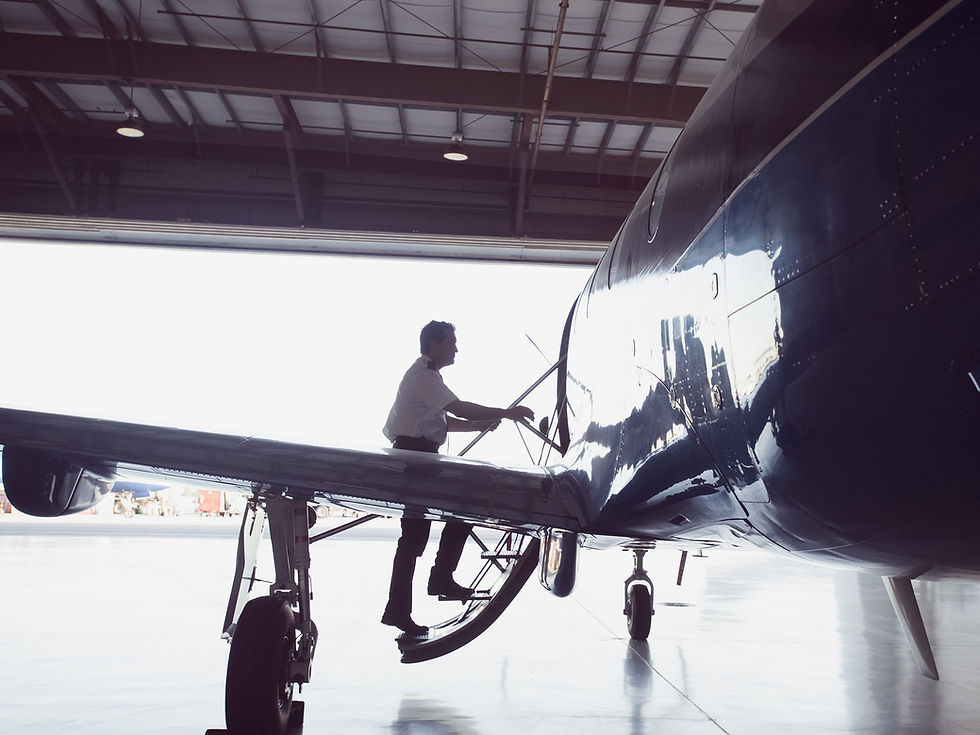Forecasting the Skies: Weather Prediction and Avoidance in Aerospace and Defense
- Shreshth Virmani
- Aug 23, 2023
- 3 min read

In the realm of aerospace and defense, the forces of nature hold significant sway. Weather conditions can impact flight safety, mission success, and strategic decisions. This article delves into the crucial domain of weather prediction and avoidance, unveiling how cutting-edge technology, data analytics, and strategic planning converge to ensure the skies are navigated safely and missions are executed with precision.
Introduction: Taming Nature's Forces
Weather is a formidable adversary in the aerospace and defense sectors. The unpredictable nature of atmospheric conditions can pose challenges for aircraft operations, missile launches, and tactical planning. Weather prediction and avoidance stand as the sentinels that safeguard against the elements, enabling safer flights, successful missions, and strategic supremacy.
Meteorological Insights: The Science of Forecasting
Weather prediction relies on a symphony of meteorological data. Satellites, radar systems, and weather stations monitor atmospheric parameters such as temperature, humidity, wind speed, and pressure. This data is analyzed using advanced models to generate forecasts that provide insights into changing weather patterns and potential hazards.
Data Analytics and Machine Learning: Precise Prognostication
Technology elevates weather prediction from guesswork to precision. Data analytics and machine learning algorithms sift through vast datasets, discerning patterns and correlations that humans might overlook. These algorithms refine predictions, enhancing accuracy and providing valuable lead time for strategic decisions.
Critical Decision-Making: Impact on Aerospace Operations
Weather conditions significantly influence flight safety and operational efficiency. Pilots, air traffic controllers, and aerospace engineers rely on real-time weather information to make critical decisions. From choosing flight routes to planning takeoffs and landings, accurate weather insights are paramount to avoid turbulence, lightning, icing, and other hazards.
Mission Planning and Defense Strategy: Strategic Edge
In defense operations, weather prediction isn't just about safety; it's about strategic advantage. Adverse weather can impede missile launches, compromise surveillance systems, and impact communication. Incorporating weather data into strategic planning empowers defense agencies to optimize mission execution and maintain tactical supremacy.
Weather Avoidance: Navigating Around Storms
Weather avoidance is a pivotal practice in aerospace. Aircraft receive continuous updates on weather conditions along their flight paths. If adverse conditions arise, pilots can make real-time adjustments to deviate from turbulent areas, ensuring passenger comfort and aircraft safety. This proactive approach minimizes disruptions and prevents potential hazards.
Storm Tracking: Anticipating Severe Weather
Severe weather events, such as hurricanes and typhoons, demand meticulous tracking. Satellite imagery, computer models, and data analytics enable meteorologists to predict the trajectory and intensity of these storms. This foresight allows defense agencies and airlines to implement evacuation plans and avoid impacted regions.
Space Weather: The Celestial Influence
Beyond Earth's atmosphere lies space weather, which encompasses solar flares, geomagnetic storms, and cosmic radiation. Space weather can interfere with communication systems, navigation, and satellite operations. Monitoring and predicting space weather events are vital to safeguarding satellite-based infrastructure and maintaining communication networks.
Advancements and Challenges: A Continuous Quest
Advancements in technology continuously refine weather prediction. High-resolution satellite imagery, sophisticated weather models, and the integration of real-time sensor data enhance accuracy. However, challenges persist, including the inherent complexity of atmospheric dynamics and the need for global data sharing to improve predictions.
Conclusion: Navigating Nature's Complexities
In aerospace and defense, weather prediction and avoidance embody the fusion of science and strategy. From air traffic management to missile launches, their impact resonates across the spectrum of operations. As technology evolves, and our understanding of atmospheric dynamics deepens, the skies will be navigated with increasing precision, ensuring the safety of flights, the success of missions, and the strategic edge of defense operations.




Comments